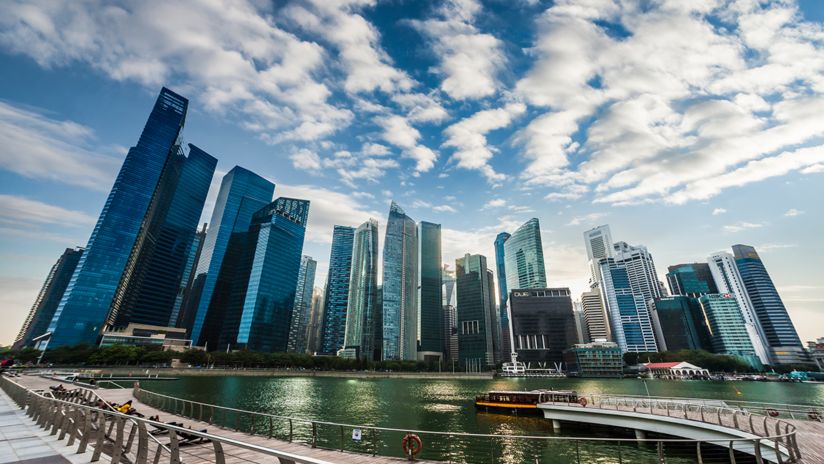Committing ourselves to sustainability

Telstra’s commitment to operating as a responsible and sustainable business has recently been recognized by the Digital Production Partnership (DPP) Committed to Sustainability Programme, an industry leading scheme celebrating and promoting good practice in environmental sustainability, across the media industry.
“We’re delighted that Telstra has joined an increasing number of companies that are demonstrating their fantastic commitment to building an environmentally sustainable media industry,” said DPP CEO, Mark Harrison. “And by scoring the maximum five out of five they're leading the way, driving our industry towards continuous improvement and good practice.”
Central to this achievement is Telstra’s sustainability strategy (the Strategy), which comprises several targets across three key pillars:
- Responsible business - we will be a sustainable, globally trusted company that people want to work for and with
- Digital futures - we will foster strong, inclusive communities that are empowered to thrive in a digital world
- Environmental solutions - we will use technology to address environmental challenges and help our suppliers, customers and communities do the same
Our Sustainability, External Affairs and Legal (SEAL) team work across the business to drive progress against the Strategy and manage sustainability-related risks and opportunities.
As well as that, we have a Telstra Climate Executives Group that oversees the climate change work program, and a Telstra Audit and Risk Committee that oversees climate risk management and makes recommendations to the Board on targets.
All this translates into plenty of action too. In December 2019, we announced our commitment to achieve net zero greenhouse gas emissions by 2050 in line with the Paris Agreement. We set further ambitious climate goals only a few months later in March 2020:
- Be carbon neutral in 2020
- Enable renewable energy generation equivalent to 100% of our consumption by 2025
- Reduce our absolute emissions by at least 50% by 2030
This is important as, in an interconnected energy grid, new renewable generation has the beneficial effect of decarbonizing the grid for everyone. Already, we are Australia’s largest corporate purchaser of electricity from renewable projects connected to the grid under project-specific agreements. While the output from these projects goes into the total grid pool, rather than directly into our facilities, these agreements play a role in providing the investment certainty to enable these projects to proceed. As the grid itself increases its proportion of renewable energy due to agreements with us and others, the power that flows into our facilities from the grid also becomes greener.
The projects we have agreements with, including such landmark sites as the Murra Warra Wind Farm and the Emerald Solar Park, generate renewable energy equivalent to the energy consumption of 255,000 households. We will continue to build on this work and invest in renewable energy generation.
Effective waste management is an important component of the overall sustainability strategy too. Of 9,906 tonnes of total commercial waste last year, only 3,715 tonnes ended up in landfill, a mere 37.5% of the commercial waste total. This number is heading in the right direction too and is 15% down on the year before.
We’re looking to improve that even more by continuing to reduce waste from our operations and increasing the reuse and recycling of materials. Resource efficiency creates an opportunity for us to innovate, and this year we have focused on redesigning our customer packaging to incorporate sustainable design principles. Noting that e-waste is one of the fastest growing types of waste in the world, we have also explored ways to increase e-waste recycling of both our customer devices and our network equipment.
We don’t just apply this thinking to ourselves; we apply it to the companies we deal with. We provide all our suppliers with a Supplier Code of Conduct, which sets out the minimum standards we expect from them and forms part of our standard purchasing terms. The Code was updated in February 2020 to include enhanced requirements in relation to climate change, responsible sourcing of minerals, and grievance procedures for employees. A supplier’s ability to meet or exceed our minimum standards set out in the Code is a key consideration for us when we make purchasing decisions.
The sustainable future
As well as the DPP Committed to Sustainability Mark, we have been listed on CDP’s Global Climate Change Index A-List, demonstrating our leadership on environmental transparency and performance.
We continue to strive forward to make ourselves more sustainable and believe that sustainability as a whole will become a more central discussion in the industry. In recent years, the Telstra Broadcast Services team have seen an increase in remote production adoption, which has environmental benefits due to the reduction in travel emissions and power-use.
We will continue to engage in discussions on how the media and technology industry can come together on delivering more sustainable, environmentally friendly impacts to our communities. After all, this is the sort of work that is in everyone’s interest.


